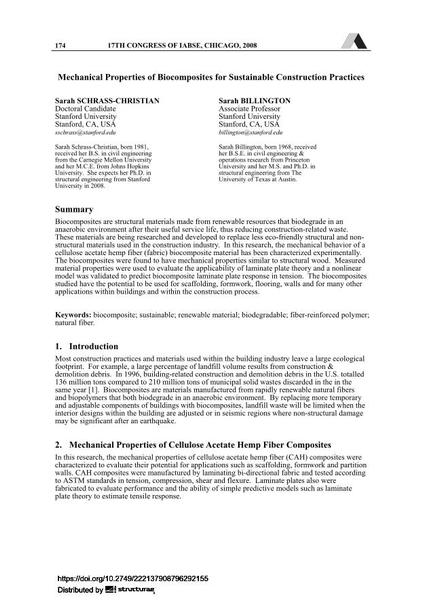Mechanical Properties of Biocomposites for Sustainable Construction Practices

|
|
|||||||||||
Détails bibliographiques
| Auteur(s): |
Sarah Christian
Sarah Billington |
||||
|---|---|---|---|---|---|
| Médium: | papier de conférence | ||||
| Langue(s): | anglais | ||||
| Conférence: | 17th IABSE Congress: Creating and Renewing Urban Structures – Tall Buildings, Bridges and Infrastructure, Chicago, USA, 17-19 September 2008 | ||||
| Publié dans: | IABSE Congress Chicago 2008 | ||||
|
|||||
| Page(s): | 174-175 | ||||
| Nombre total de pages (du PDF): | 7 | ||||
| Année: | 2008 | ||||
| DOI: | 10.2749/222137908796292155 | ||||
| Abstrait: |
Biocomposites are structural materials made from renewable resources that biodegrade in an anaerobic environment after their useful service life, thus reducing construction-related waste. These materials are being researched and developed to replace less eco-friendly structural and non- structural materials used in the construction industry. In this research, the mechanical behavior of a cellulose acetate hemp fiber (fabric) biocomposite material has been characterized experimentally. The biocomposites were found to have mechanical properties similar to structural wood. Measured material properties were used to evaluate the applicability of laminate plate theory and a nonlinear model was validated to predict biocomposite laminate plate response in tension. The biocomposites studied have the potential to be used for scaffolding, formwork, flooring, walls and for many other applications within buildings and within the construction process. |
||||
| Mots-clé: |
durable
|
||||
